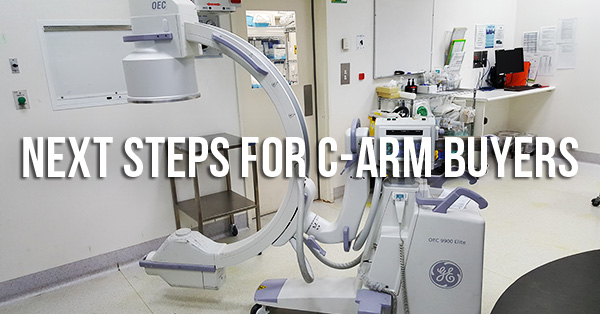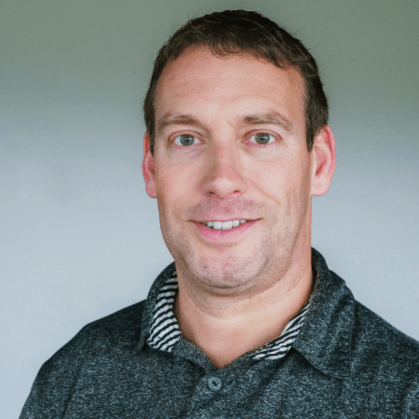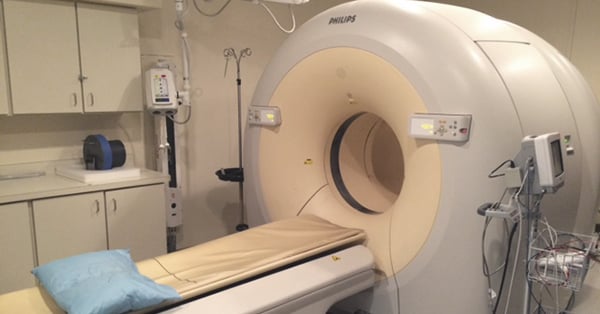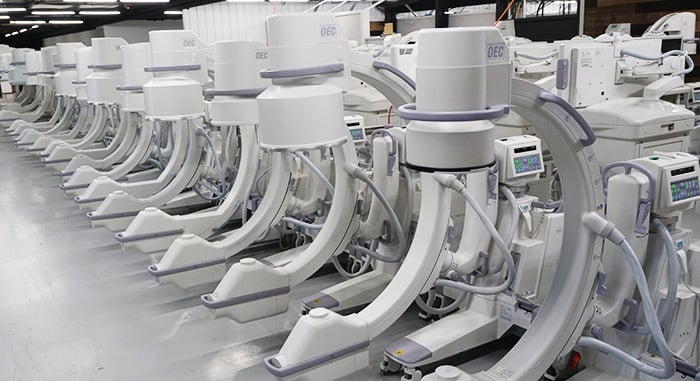
Between the time you purchase your C-arm system and the time you can scan your first patient with it, there are a number of things that need to happen. Some of these responsibilities fall to your equipment provider, but others will fall to you and/or your team.
Below you'll find which responsibilities are yours, which are your installer's, and a few tips that will help you prepare for the arrival of your C-arm and begin serving patients with it sooner.
Your Responsibilities
State Regulation, Registration
Regulatory compliance to acquire and maintain state registration is the responsibility of the facility receiving the new equipment. Requirements also vary from state-to-state. These steps may include, but aren't limited to, fees, inspections, or radiation shielding. It's best to know your state's regulations before you make your purchase, but you should most definitely know them before you schedule patients. Some states offer a 30 or even 60-day grace period for registration and compliance. Others are more strict and it may take multiple weeks to complete your registration and get you scanning.
Contact the appropriate agency with our List of State Radiological & Health Departments.
Physicist's Visit
Before your system is given the go-ahead to scan patients, a state-licensed radiation physicist will need to conduct an inspection on it for functionality, image quality, and radiation dose parameters. A medical physicist is specially trained in the electrical, mechanical, and radiation physics of medical equipment. Booking the physicist visit is your facility's second responsibility. Your state's health or radiation authorities can provide you with a referral to the correct professional.
Book your physicist in advance to coordinate with the delivery date of your C-arm. This will help eliminate delays. A physicist can also help in providing site planning and guidelines for state and federal regulations, so take the time to get any questions out of the way when you call to book.
The primary responsibility of your physicist will be to ensure that your C-arm is safe for patient and staff use. They'll be able to answer any questions about exposure risk, and can identify areas where accidental exposures could occur. They will provide dosimetry measurements and create a report on the dose or emission of radiation for your records and state records. They will also want to see a completed FDA 2579 form (more on this in a minute) prior to signing off that the equipment is safe and ready for patient use.
Your Installer's Responsibilities
The installation of a mobile C-arm certainly isn't as involved as the installation of fixed equipment like R/F rooms or CT scanners, but it definitely pays to have a field engineer on hand to take care of two primary responsibilities:
Functional Testing
A reputable C-arm provider will perform functional and dose checks before the system leaves their facility, but things can shift or change during the shipping process. Having a trained C-arm engineer on hand to run a final test after delivery is a fail-safe. If anything needs to be addressed, they can do so on the spot.
FDA 2579 Documentation
Form 2579 is an official report of assembly of a diagnostic X-ray system, and is required to be filed with the FDA and your state. The 2579 should be filled out completely by the person installing the system. As we mentioned earlier, your physicist will want to see this form and verify that it has been filled out correctly by your installer.
See a sample 2579
The Takeaway
The best way to prevent delays and get things started with your new C-arm is to know (in advance) what needs to be done and who needs to do it. If you've instated your compliance measures and scheduled your physicist's visit beforehand, you'll be in good shape when your provider's engineer and your new system arrive.

Micah Plimpton
Micah Plimpton is the Director of Technical Excellence at Block Imaging. He considers it a privilege to guide, connect, and serve medical and logistics professionals for hassle-free imaging projects. Out of the office, Micah enjoys hiking, mountain biking, and spending time outdoors with his wife and children.






